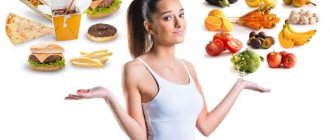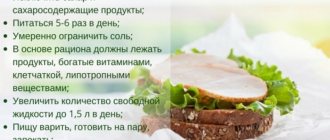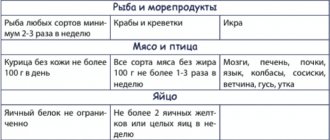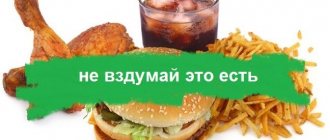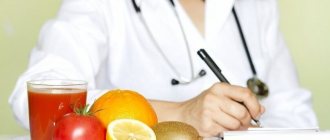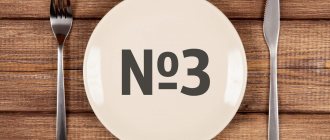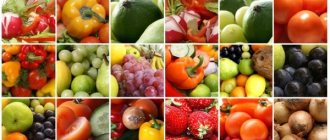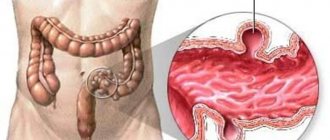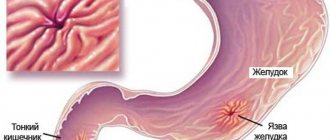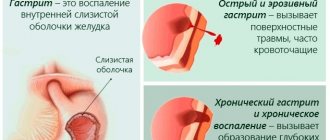Cardiovascular diseases are usually characterized by high blood pressure. However, high blood pressure in itself is not so scary. The formation of a vicious circle poses a great danger: vasospasm reduces the volume of circulating blood. This sooner or later leads to disability and even death.
How to deal with this? The most important factor on the path to recovery and a prerequisite is proper nutrition, which is included in the complex of treatment and preventive measures. Nutrition for hypertension is the most frequently asked question, so today we will try to give a comprehensive answer to it.
The importance of proper nutrition
Why do doctors pay special attention to nutrition? With the first manifestation of symptoms of hypertension, you should immediately reconsider your lifestyle and regimen. Doctors assign the main role to nutrition. What does it mean to eat right and why is it so important, you ask. Let's figure it out together.
Proper nutrition for hypertensive patients contributes to:
- normalization of blood circulation;
- improving the functioning of systems: cardiovascular, urinary and hepatobiliary;
- correction of metabolism;
- normalization of weight.
Properly formulated therapeutic nutrition reduces the load on the digestive organs and reduces the risk of developing atherosclerosis, providing the body with the necessary nutrients, microelements and vitamins. The diet of a hypertensive patient is characterized by a reduced calorie content, due to a reduction in the consumption of fats and carbohydrates.
By order of the Ministry of Health, a basic nutrition option has been developed, which is used in medical institutions. Its main characteristics.
The calorie content of the daily diet is 2170-2400 kcal.
| Squirrels | Fats | Carbohydrates |
| 85-90 grams | 70-80 grams | 300-330 grams |
| of them | ||
| Animal proteins - 50 grams | Vegetable fats - 25-30 grams | Simple carbohydrates (sugar) – 50 grams max |
If there are concomitant diseases
A diet for hypertension and excess weight should include predominantly low-fat foods. In this case, it is recommended to reduce the consumption of healthy fats (avocado, olive oil, etc.).
For elderly and elderly people, products to reduce and lower blood pressure should be well absorbed. In such cases, it is better to prepare crushed food and regularly drink tinctures of bitter herbs, which can reduce cardiovascular symptoms.
For heart disease, the recommended diet (for any form of hypertension) should significantly reduce cholesterol levels.
For diabetes and other metabolic disorders, blood sugar should be constantly monitored. Sweet fruits and other sources of fast carbohydrates are excluded.
In infectious diseases, the nutritional system should be based on the compatibility of the medications taken.
It is well known that citrus fruits are contraindicated when taking antibiotics, which are usually prescribed for ear and throat diseases. With increased fragility of blood vessels, it is necessary to control the intake of food containing ascorbic acid.
A high blood pressure diet for young women should be rich in additional microelements (for example, iron).
General principles of nutrition for hypertension
People suffering from hypertension should understand that an individual diet prescribed by their attending physician, taking into account physiological needs, will bring benefit and relief only if the regimen and certain conditions are followed:
- the daily food intake should be consumed in small portions 5 or more times a day;
- last meal 2 hours before bedtime;
- the amount of salt used is kept to a minimum;
- the volume of liquid consumed is reduced to 1.5 liters;
- prepare food by boiling, stewing, baking or in a steam bath;
- a complete ban on alcohol and tobacco products is established;
- seafood consumption increases;
- carbohydrate intake is reduced and the amount of protein increases.
The amount of salt consumed in the diet of a hypertensive patient should be reduced to 5 grams per day.
conclusions
https://youtu.be/zSNx7EUiZ5k
Properly selected food for high blood pressure (with a small amount of fat) can show excellent results. To ensure a complete diet, you need to consult a doctor, especially a nutritionist.
Home monitoring helps keep an eye on your blood pressure as well as how these changes are working. He will also warn you and your doctor about possible health complications. Today, blood pressure monitors are available everywhere and are sold without a prescription.
Features of the diet for hypertension
1st degree
A properly formulated diet for stage 1 hypertension and an active lifestyle can prevent the development of the disease and completely recover from the disease. The daily menu for hypertensive patients should include:
- dairy and fermented milk products;
- soups;
- porridge;
- fruits, vegetables, herbs;
- lean meat and fish.
Undesirable foods, the consumption of which is recommended to be reduced:
- salt;
- carbohydrates;
- liquid;
- animal fats.
A list of foods that it is advisable to avoid, for example:
- products containing caffeine;
- smoked meats, pickles and seasonings;
- alcoholic drinks;
- semi-finished products;
- fatty and floury.
The result of the diet: excess weight is reduced, harmful substances are eliminated, the cardiovascular system is strengthened, and blood pressure is stabilized.
People suffering from high blood pressure and frequent hypertensive crises should give preference to herbal products.
2nd degree
Second-degree hypertension, in contrast to that described above, is characterized by more elevated and stable blood pressure levels. Therefore, in addition to medications, doctors recommend adhering to a salt-free diet and including bran, dried fruits and seafood in the daily menu.
When purchasing food, it is advisable to study its composition for the content of salt, cocoa and fat, since these substances can aggravate the general condition of a hypertensive patient, sharply increasing blood pressure levels.
If you are diagnosed with stage 2 hypertension, consumption of smoked and fatty foods is strictly prohibited.
3rd degree
People with stage 3 hypertension are at increased risk. Frequent increases in blood pressure during the day provoke the occurrence of vascular accidents in the form of diseases affecting the heart (heart attack), brain (stroke) and other organs. Treatment is usually carried out within the walls of a hospital.
In addition to prescribing long-acting medications, some doctors recommend the use of folk remedies and prescribe a strict diet.
Any product from the prohibited category can cause an exacerbation of the disease and negatively affect well-being.
Salt is completely excluded from the menu, as well as products containing animal fats. The portion of food taken is reduced, but the number of meals is increased up to 7 times a day. During therapy, the patient's diet is enriched with fresh fruits and vegetables, which improve the patient's mood and replenish the weakened body with energy.
The most popular diets - menu for the week
For stage 1 hypertension
Monday and Thursday
| Breakfast | Buckwheat porridge and a glass of milk. |
| Dinner | Lean boiled meat and light soup, bread. |
| Dinner | Vinaigrette, rice, chicken fillet, green tea. |
Tuesday and Friday
| Breakfast | Vegetable stew, compote and a piece of cookies. |
| Dinner | Green cabbage soup, boiled turkey fillet, bread and chicory drink. |
| Dinner | Boiled fish, avocado salad with green onions, herbal tea. |
Wednesday and Saturday
| Breakfast | Oatmeal, rose hip decoction. |
| Dinner | Boiled chicken fillet, lentil porridge, jelly. |
| Dinner | Mushrooms in sour cream sauce, compote. |
Sunday
| Breakfast | Steamed protein omelette, rosehip infusion. |
| Dinner | Baked potatoes with steamed fish cutlet, berry juice. |
| Dinner | Rabbit stew with prunes, apple and cabbage salad, compote. |
For stage 2 hypertension
Monday and Thursday
| Breakfast | Oatmeal with nuts and dried fruits. Rose hip decoction. |
| Dinner | Soup with water, steamed cutlet, compote without sugar. |
| Dinner | Stewed vegetables and a piece of fish, jelly. |
Tuesday and Saturday
| Breakfast | Cottage cheese with dried fruits and compote. |
| Dinner | Soup with a piece of rye bread. |
| Dinner | Vegetable salad and boiled meat. |
Wednesday and Friday
| Breakfast | Oatmeal in water without sugar and rosehip infusion. |
| Dinner | Fish soup and vegetable salad. |
| Dinner | Vegetable soup and compote. |
Sunday
| Breakfast | a glass of kefir and 2 apples. |
| Dinner | vinaigrette and steamed meatballs. |
| Dinner | pilaf with chicken and light vegetable salad, tea with lemon balm. |
For stage 3 hypertension
Monday and Thursday
| Breakfast | Semolina, tea with milk. |
| Dinner | Vegetable soup, carrot puree. |
| Dinner | Boiled fish and potatoes. Tea with milk. |
Tuesday and Saturday
| Breakfast | 100 grams of cottage cheese, chicory drink and oatmeal. |
| Dinner | Barley soup with water, steamed veal, carrot puree, berry juice. |
| Dinner | Baked potatoes, fruit salad, boiled turkey, rosehip infusion. |
Wednesday and Friday
| Breakfast | Oatmeal with raisins, apple compote. |
| Dinner | Tomato and cucumber salad, boiled turkey fillet. |
| Dinner | Vegetable stew, steamed fish cutlets; pear. |
Sunday
| Breakfast | Buckwheat with dried apricots, low-fat cheese, berry compote; |
| Dinner | Pumpkin soup, boiled chicken breast, buckwheat porridge, tomato, oatmeal jelly; |
| Dinner | Cranberry curd mousse, freshly squeezed juice. |
Meat and fish are taken with low fat content, steamed or boiled. Kefir, jelly and compote consume no more than 200 grams. For snacks, you can use seasonal fruits or nuts and dairy products.
Salt-free diet
The main diet is to reduce salt intake. A salt-free diet allows you to:
- purify the blood;
- relieve the load on the kidneys, liver and cardiovascular system;
- normalize blood pressure;
- get rid of swelling;
- improve the condition of the skin.
However, it also has negative sides, so it is advisable to consult with your doctor and determine the timing of the diet.
Restrictions:
- A long stay on a diet disrupts the water-salt balance in the body.
- This diet is contraindicated for children and adolescents, pregnant and breastfeeding women, people with thyroid dysfunction, and athletes;
- Cannot be used in the hot season.
Low-cholesterol diet
Hypertensive patients often have elevated cholesterol levels, so doctors often advise sticking to a diet. A low-cholesterol diet promotes:
- reducing the amount of salt consumed;
- reducing fluid intake;
The products are boiled and then baked, and the daily ration is divided into 6 equal portions. The main condition: all foods containing high amounts of fat are excluded from the daily menu.
Diet number 10
Diet number 10 requires limiting salt and liquid, leaving food complete and balanced. The main direction of the diet: removing excess fat and cholesterol from the body. Doctors are unanimous that food enriched with K, Mg, Ca, Zn, and vitamin C can help in the fight against hypertension. The ideal products are:
- cottage cheese with a reduced fat content;
- red bell pepper;
- pumpkin seeds.
The cooking methods remain the same: steamed, stewed, baked, boiled. The calorie content of food should not exceed 2300 to 2600 kcal per day. Only products approved for hypertension are used; they have been mentioned more than once. Diet No. 10 is ideal for hypertensive patients and helps cope with high blood pressure.
What happens if you don't follow a diet?
Refusal to diet or its violation is fraught with:
- frequent hypertensive crises;
- development of atherosclerosis;
- circulatory disorders;
- attacks of angina pectoris;
- high risk of myocardial infarction and stroke.
Recommended Products
10 most important foods that will reduce blood pressure.
| The product's name | Nutrient content | Norm |
| Cottage cheese | microelements - Ca, P, R, K, Mg, protein, ascorbic acid, vitamins - B, A and PP | 100-150 g/day |
| bell pepper | ascorbic acid, lycopene, capsaicin, | 2 pcs. medium size |
| Salmon | vitamins, polyunsaturated acids, tryptophan, K, fatty acids: omega-3 and 6 | 100-200 g/day 2-3 times a week |
| Oatmeal | carbohydrates, antioxidants, K, Fe, Se, Mg | daily for breakfast |
| Pumpkin, seeds | vitamins, including K, trace elements and Zn in large quantities | 20 g every day |
| Cocoa | K, Ca, Mg, vitamins – K, PP | 2-3 cups per week |
| Green tea | vitamin P | 2-3 cups per day |
| Almond | K, Mg, B vitamins including riboflavin and B3, protein, nutrients | 25-30 g/day |
| Skim milk | K, Ca, Mg, protein, vitamins, small amounts of fat | 2 glasses per day |
| Chocolate black | flavonoids and a complex of important components | 30 g daily |
Sample menu
https://youtu.be/lXBEGjglfZw
The menu of a chronic hypertensive patient should include a lot of magnesium and potassium. The calorie content of the diet should be reduced, despite the high carbohydrate content in the form of vegetables and fruits. If you are overweight, you need to eat 1200-1500 kcal per day.
Breakfast (266 calories):
- 1 slice of whole wheat bread, toasted without butter (no more than 200 g);
- 1 large egg, cooked to 1/4 tsp. olive oil;
- 2 tbsp. unsalted salsa;
- 1 medium banana or apple for breakfast – for dessert.
Snack (63 calories):
- 3/4 cup blueberries or unsweetened dried fruits, or low-fat cottage cheese and vegetable juice.
Lunch (343 calories):
- 2 cups mixed fresh herbs;
- 3/4 cup vegetables of your choice (cucumbers or tomatoes);
- 1/3 cup canned white beans, rinsed (such products can be consumed no more than one glass per day);
- 1/2 avocado.
Snack (62 calories):
- 1 medium orange, or carrot and cabbage salad.
Dinner (449 calories):
- 1 serving of grilled salmon and Brussels sprouts;
- half a glass of cooked lentils and low-fat kefir.
It can be seen that the diet also includes foods that normalize blood pressure.
Prohibited Products
For any disease, there is a list of products whose use is undesirable or prohibited. A disease whose characteristic feature is a high level of blood pressure is no exception. Foods that should be excluded from the diet:
- baked goods and cakes;
- fresh bread;
- smoked meats and pickles, hot seasonings;
- spicy, fried foods and sauces;
- carbonated drinks;
- fatty cheeses;
- coffee and alcoholic drinks;
- animal fats;
- fatty meat broths.
American Dash Diet
The dash or dash diet for hypertensive patients is recommended by many cardiologists and nutritionists. It is one of the best for weight loss and high blood pressure, and is approved for diabetes and coronary heart disease.
The diet consists of eating large quantities of fresh vegetables and fruits, dairy and fermented milk products, and cereals. Salt is allowed no more than a teaspoon per day, taking into account the amount contained in products.
The main principle is to avoid fatty foods.
You need to eat about 180 g of meat per day. Meat broths are allowed no more than 2 times a week. Desserts are replaced with nuts, seeds and dried fruits. There are recommended portions for each dish:
- Boiled rice or beans - no more than 1/2 cup,
- One slice of dried yesterday's bread,
- A glass of dairy products,
- A cup of vegetables or fruits,
- A teaspoon of vegetable oil.
By reducing the number of calories to 2000, this diet is used for weight loss. Additional advantages are the absence of contraindications and a sufficient amount of nutrients:
- 25-40 g fat,
- 20-35 g of vegetable fiber,
- permissible amount of proteins, potassium and calcium.
Since there are no restrictions on products (only their quantity is limited), a person can combine the menu himself, choosing a list of products for the week.
Differences in nutrition between women and men
Proper nutrition recommended by nutritionists for hypertension has its own characteristics. A man loves high-calorie and rich foods. The right approach will help you cope with this task. For example, the favorite dish of the male half of society is fried meat. You don’t have to give up the delicacy right away, you just need to change the cooking method - grill it, without oil. The male body will especially benefit from:
- celery;
- red fish;
- pomegranate;
- seafood;
- eggs.
Due to the physiological characteristics of the body, a woman needs food less than a man and tolerates a diet more easily. For women with hypertension, it is effective to use celery and olive oil when cooking. The balance of vitamins and fats will be maintained by salmon and pink salmon. special place is given to:
- dried fruits;
- oatmeal;
- broccoli;
- avocado;
- cabbage;
- lean meat and fish;
- vegetable soups;
- porridge;
- low-fat dairy products;
- vegetables cooked in a steam bath.
Menu for hyper- and hypotension
Nutrition for high blood pressure in men and women differs from the diet of hypotensive patients. The indicative menu for the day contains a table that presents a list of healthy dishes for lowering and increasing blood pressure:
| Meals | Recommended menu | |
| For hypertension | For hypotension | |
| Breakfast | Cottage cheese casserole | Oatmeal porridge with milk and honey |
| Herbal tea with crackers | Black coffee, bread with butter and cheese | |
| Snack | Apple | A few pieces of dark chocolate |
| A glass of kefir | Cocoa | |
| Dinner | Vegetarian borscht with black bread and a spoonful of sour cream | Noodle soup with meat broth, a slice of whole grain bread |
| Buckwheat porridge with steam cutlet | Pilaf with meat | |
| Dried fruit compote with biscuits | Black tea, marshmallows | |
| Afternoon snack | A piece of cottage cheese casserole with weak tea | Yogurt |
| A handful of nuts or dried fruits | ||
| Dinner | Vegetable stew with rice | Mashed potatoes with meatballs |
| Steamed chicken breast with sour cream sauce | Fresh salad | |
| Herbal tea with honey | A glass of milk | |
What diet is suitable for hypertension?
What diets are used to treat hypertension? A clear example of the variety of diets used in the treatment of hypertension, in the form of a table, will help you quickly select the right option.
| Diet name | Main Ingredient | Its peculiarity | Effect on the body |
| Salt-free | Complete avoidance of salt prevents fluid retention in the body. It is replaced with herbs, lemon juice, and non-spicy seasonings. | improves the functioning of the stomach, intestines, lungs, the condition of veins and blood vessels | |
| Rice | porridges, soups and other dishes based on rice. As well as berry fruit drinks and fruit compotes | has a diuretic effect, eliminates inflammatory processes | eliminates swelling, restores blood circulation, improves the functioning of the heart muscle |
| hyposodium | various first courses in vegetable broths or water. And also: legumes, dairy products, cereals, vegetables - fresh, boiled, steamed | used among patients with atherosclerosis | improves kidney function, reduces the excitability of the nervous system, normalizes metabolism, accelerating metabolism |
| Potassium | dried fruits, potatoes, cabbage, apples and rose hips | used for swelling and poor circulation | has diuretic and anti-inflammatory properties, fights swelling |
| Magnesium | foods with a large amount of magnesium. Bread, cereals, vegetables, legumes, herbs, nuts | Has a positive effect on hypertensive patients with heart disease | lowers cholesterol, relieves inflammation |
| Fruit and vegetable | foods high in potassium. Vegetables, fruits, fresh, boiled, baked or steamed | if you are overweight | has a diuretic effect and promotes weight loss |
| Curd | low-fat dairy foods: milk, yogurt, cottage cheese, sour cream. | for atherosclerosis and poor circulation | promotes the removal of excess fluid, fats, and toxins |
Foods that are necessary for hypertensive patients
https://youtu.be/1lt0BR_7Cvw
We list the main foods for hypertension that should be eaten every day.
Leafy greens
Potassium helps your kidneys get rid of more sodium by excreting it through your urine. This, in turn, lowers blood pressure. Leafy greens that contain high amounts of potassium include:
- Romaine lettuce.
- Arugula.
- Chinese cabbage.
- Turnip tops.
- Spinach.
- Beet tops.
Canned vegetables often contain sodium, so it is not recommended to consume them frequently. But frozen they contain just as many nutrients as fresh and are easier to store.
You can also blend green vegetables with bananas and nut milk to make a healthy, sweet smoothie (or use them in salads).
Red beetroot
Beets contain significant amounts of nitric oxide, which can strengthen blood vessels and lower blood pressure. Researchers also found that natural compounds in beet juice lowered blood pressure in just 24 hours.
You can squeeze the juice, or boil and eat the whole root vegetable. Beets are delicious roasted or added to stir-fries and stews. You can also bake it in foil. Be careful when handling the vegetable: the juice may stain your hands and clothes.
Oatmeal and grits
Oatmeal is an excellent food that is high in fiber and low in fat and sodium, which can help lower blood pressure.
Oatmeal for breakfast is a great way to start the day. In order not to waste time preparing it in the morning, just pour half a glass of cereal with milk in a jar. In the morning, stir the porridge and add berries, granola and cinnamon to taste.
Bananas
Eating foods rich in potassium is much healthier than taking supplements. Slice a banana into muesli or oatmeal to add this micronutrient to your body.
You can eat these fruits as a snack or take them with you for lunch while following a diet for hypertension.
Salmon, mackerel and any fish with omega-3
Fish is an excellent source of protein. Fatty varieties such as mackerel and salmon contain omega-3 fatty acids, which can lower blood pressure, reduce inflammation and lower triglyceride levels.
Trout contains vitamin D. This hormone-like vitamin has properties that lower blood pressure.
One of the benefits of cooking fish is that it is easy to season and bake. Try placing salmon fillets on parchment paper and seasoning with herbs, lemon and olive oil.
Bake the fish in a preheated oven at 200° for 12-15 minutes.
Seeds
The raw seeds contain high amounts of potassium, magnesium and other minerals, which are known to lower blood pressure.
Enjoy a small amount of sunflower, pumpkin or squash seeds as a snack between meals.
Olive oil
Olive oil is an example of a healthy fat. It contains polyphenols, which are anti-inflammatory compounds that can lower blood pressure.
Olive oil can help you meet your fat needs.
Pomegranate
Pomegranate is a healthy fruit that can be consumed raw or in juice form. According to the study, it was concluded that a glass of pomegranate juice once a day for four weeks will lower blood pressure in the short term.
Pomegranate juice can be part of a healthy breakfast. Be sure to check the sugar content of store-bought juices, as too much sugar can be detrimental to your health.
In addition to the above, any low-fat dairy products, fresh fruits and berries, and nuts are very useful for hypertensive patients.
Recipes for hypertension
Beets stewed with apple
Ingredients
- boiled beets - 150 grams;
- sour apples - 60 grams;
- ½ teaspoon flour;
- vegetable broth - 30 grams;
- butter - 5 grams;
- 1 tablespoon of low-fat sour cream.
Cooking method
Prepare vegetable broth in advance. Peel the boiled beets and cut into small pieces. Also prepare the apples. Sift the specified amount of flour and heat in a frying pan, adding butter. Then pour in the vegetable broth and sour cream. The resulting mass must be left on the fire. After 10 minutes, strain and add chopped apples and beets. The dish will be ready in 15 minutes.
This recipe will help you quickly normalize your blood pressure and get rid of extra pounds. This is an ideal dish to combat obesity.
Rabbit in sour cream sauce
Although the recipe may seem simple and familiar, it is useful for high blood pressure.
Ingredients
- Rabbit meat - 100 g;
- 2-3 tablespoons of vegetable broth;
- a tablespoon of low-fat sour cream;
- a tablespoon of vegetable oil.
Cooking method
Cut 100 grams of rabbit meat into small pieces and fry, adding a tablespoon of vegetable oil to the pan. Next, add 2-3 tablespoons of pre-prepared vegetable broth and a spoonful of low-fat sour cream. The dish should be simmered over low heat until cooked.
What can't you eat?
For most people who need to achieve or maintain a healthy weight, a low-fat diet is recommended. It is also recommended to reduce alcohol consumption.
Eating a low-fat diet can also help you lower your cholesterol levels.
High levels of cholesterol in your body can increase your risk of stroke or heart disease, so if you already know you have high cholesterol, it's even more important to make sure you keep your blood pressure normal. This will help you lose weight.
Not all fats are bad - on a diet for hypertensives, eating foods containing “good” polyunsaturated and monounsaturated fats is allowed (eat oily fish, avocado and olive oil). Don't overdo it though, as they can still lead to weight gain.
The diet prescribed for high blood pressure and excess weight limits fat more seriously.
What is it impossible or undesirable to eat if you have high blood pressure? Try to avoid saturated fats, which are commonly found in processed foods such as pies and pastries, red meat, butter, palm oil and ghee.
The table shows foods that some find very difficult to immediately eliminate due to habit. However, this must be done.
Approximate diet for people with stage 2 hypertension
Diet compiled for one day could be like this:
- Breakfast – milk soup, rosehip infusion,
- Second breakfast – fresh or baked fruits,
- Lunch – vegetable soup, steamed cutlets with rice, fruit drink,
- Afternoon snack – cottage cheese casserole or kefir,
- Dinner – baked chicken or fish with vegetable side dish, jelly.
All recipes for dishes used in the diet are very easy to prepare. By changing your eating habits, you can greatly improve your well-being and prevent complications.
https://youtu.be/wuT1U1c4Xjg
Basic Rules
In order to maintain normal blood pressure, you need to adhere to certain rules of nutrition and lifestyle in general. These are:
- Minimize the use of salt. It would be better to give it up completely. Salt contains sodium, which helps retain fluid in the body. This increases blood volume, leading to hypertension. We must not forget that some food products contain salt. Therefore, you should not add additional salt to your food before eating.
- Avoid drinking alcohol and caffeine. These drinks can lead to blockage of blood vessels, resulting in a tremendous burden on the cardiovascular system.
- Get rid of bad habits. Excessive alcohol consumption has a negative effect on the body as a whole. You should also quit smoking. Nicotine constricts blood vessels, which causes high blood pressure.
- Eating in small portions. It is very dangerous to overeat if you have hypertension. Therefore, it is better to divide food into 6 meals per day. Before going to bed, you need to refrain from eating food - it is better to drink a glass of low-fat kefir or eat some fruit.
- Eat only lean meat. Cholesterol clogs blood vessels, which leads to high blood pressure. From meat products, it is better to choose turkey, chicken, beef, veal. Meat dishes should be cooked by steaming or using water without using oil.
- Limit consumption of foods that contain vegetable fats. The most dangerous foods for hypertension are: butter, sausage, and smoked foods. For cooking you need to use refined sunflower oil.
- Eat as many vegetables as possible. They contain fiber, which helps remove cholesterol from the body. Vegetables also help a person not to overeat.
- Reduce your sugar intake. It contributes to the appearance of excess weight, at which hypertension develops more rapidly.
- Enrich the body with potassium and magnesium. Vegetables such as carrots, beets, cabbage, as well as porridge made from rice, buckwheat or semolina will help with this. Consumption of these products helps strengthen the heart muscle.
Important to remember! If you have hypertension, it is strictly forbidden to fast! Therefore, people suffering from excess weight and high blood pressure should forget about strict and debilitating diets.
Diet in old age
According to research, 50-60% of the population over 60 years of age suffer from hypertension, so proper nutrition for high blood pressure in old age is especially important. The immune system is weakened, patients have pathologies of various organs and systems - because of this, hypertension becomes an even more dangerous disease, threatening fatal consequences (heart attack, stroke). Rules:
- Elderly people need to eat only lean meat, a variety of cereals, fruits, and vegetables.
- Nutrition should be balanced (sufficiently saturated with proteins, carbohydrates, fats) and low in calories if necessary (for overweight patients).
- It is recommended to take walks in the fresh air every day, give up bad habits, and follow a routine.
Products not recommended for high blood pressure
If you have high blood pressure, you should not consume the following foods:
- fatty meat or lard increases blood cholesterol levels;
- sausage, smoked meats, fatty fish, salted fish;
- salted cheeses, canned food;
- spicy food, seasonings;
- salt, sugar, chocolate, sweets;
- any confectionery products, baked goods;
- Alcoholic drinks, with the exception of dry wine, but must be consumed in accordance with the dosage.
All these foods increase cholesterol and blood pressure. Abuse of fatty, salty foods leads to blockage of the vascular system, plaque formation, and high blood pressure. You need to follow a diet, adhere to doctors' recommendations, know what foods are suitable for nutrition, as well as foods that lower blood pressure, which were listed above.
Monitor your blood pressure. High blood pressure is a serious problem and an indicator of the health of the body.
Causes of increased pressure
Although the exact causes of hypertension cannot be ascertained, there are still some factors with a high degree of influence on blood pressure.
Risk factors for developing hypertension:
- Age. In men, the disease actively develops over the age of 55 years, in women over 65 years.
- Heredity. It has been scientifically proven that if manifestations of hypertension were observed in neighboring generations, the risk of developing hypertension in children increases.
- Environment. Residents of large cities and areas with poor environmental conditions are much more likely to suffer from cardiovascular diseases.
- Obesity. Excess weight is a common cause of problems with blood pressure; this combination, in turn, can lead to such a serious consequence as coronary heart disease.
- Smoking. Active or passive smoking leads to vasoconstriction, which disrupts normal blood flow in the body and causes high blood pressure.
- Stress and nervous tension. The human body always reacts to any stressful situations, causing muscle tension and vasoconstriction. This also causes an increase in blood pressure.
- Poor nutrition. Constant consumption of fatty, fried, salty and smoked foods, as well as a lack of fluid in the body, leads to thickening of the blood, the formation of cholesterol plaques and, as a result, blockage of blood vessels and poor blood permeability. Therefore, it is very important to monitor which foods make up the majority of your daily diet.
Causes of high blood pressure
There are 6 significant reasons why a person is susceptible to high blood pressure or hypertension:
- Violation of vascular tone. Hypertension will be an independent disease. Signs of occurrence are pressure surges, poor health. The patient is prescribed an examination, during which a blood and urine test will be taken. An electrocardiogram of the heart is prescribed, an ultrasound of the insides and a chest x-ray are performed. If the diagnosis is confirmed, the doctor prescribes medications, diet and special exercises to tone the blood vessels.
- Kidney disease. Disturbances in the urinary system lead to high blood pressure. This means that the kidneys do not perform their functions, the patient experiences swelling of the face and limbs. Additional symptoms are pain when going to the toilet, blood and urine sampling is necessary, the result will show inflammation.
- Hormonal problems. Pressure increases as a result of improper metabolism; a malfunction in the water-salt system occurs in the human body. The composition of the blood changes, the load on the vessels increases.
- Hypertension acquired as a result of treatment for another disease. Blood pressure increases due to taking cough medications and anti-inflammatory drugs.
- Failure to follow a diet, poor nutrition. By consuming foods containing large amounts of salt, a person acquires hypertension. Salt is found in fish, smoked and salted lard, pickled vegetables, sausages, salted cheeses, delicacies, and canned foods. In addition to these products, people suffering from high blood pressure should not drink beer, coffee, strong alcohol, soda, chips, crackers and fast food. All these products contain a high percentage of salt.
- Spinal disease. Usually this is osteochondrosis, a back injury. Leads to problems with muscle tone and vasospasm. To determine the disease, it is necessary to undergo an x-ray of the spine.
Products recommended for consumption by people suffering from hypertension
Milk and dairy products . Eat foods with a low percentage of fat. Dairy products contain a high content of calcium, which has a beneficial effect on blood vessels, increases tone, and reduces blood pressure. You need to eat cottage cheese, lightly salted cheese, milk, sour cream, and drink kefir. Dairy products that lower blood pressure are required.
Sauerkraut . Cabbage contains potassium, sodium, iron and phosphorus. Consumption of the product helps strengthen the walls of blood vessels.
Vegetables and herbs are leaders in normalizing blood pressure. The diet of a person suffering from hypertension should contain up to 30% vegetables and herbs. Parsley, dill, basil, lettuce - contain a high content of vitamins that remove toxins and reduce cholesterol levels. As for vegetables, eat more peppers, carrots, cabbage. Peppers are high in fiber and magnesium. To cleanse the blood vessels, it is necessary to at least occasionally introduce cucumber and pumpkin seeds into the diet.
Fruits play a huge role in the diet of a person suffering from high blood pressure. The healthiest ones are kiwi, bananas, citrus fruits, pomegranates, apricots, and persimmons. The fruit contains a high content of plant fiber, vitamins, amino acids, ascorbic acid, phosphorus, potassium and magnesium. By introducing fruits into your diet on a regular basis, you can increase vascular tone, remove toxins and cholesterol from the body, and reduce blood pressure.
Meat and river fish . Eat fish boiled or baked, minimally reducing the use of salt and fat. The fish contains a high content of phosphorus, magnesium, microelements, avoiding blockage and hypertensive crisis. If you choose fatty fish, it contains useful acids that promote proper heart function. Those suffering from high blood pressure need to include fish, seaweed, and seafood in their diet. The body will be fed with potassium, magnesium, and iodine.
Meat with minimal fat content . In this case, turkey, skinless chicken, rabbit, and veal are suitable. Completely eliminate fatty and smoked meat products. Lean meat contains protein, which is necessary for the balanced functioning of the body. By consuming lean meat, a person saves himself from the formation of plaques, increased cholesterol, reduced body weight, and lowered blood pressure.
Seasonings and spices should not contain salt . Products that lower blood pressure and are not harmful to the body: bay leaf, basil, cumin, cinnamon and allspice. You can season salads or dishes with non-spicy mustard sauce, horseradish, or use raw onions.
Legumes and nuts . Due to the fact that during high blood pressure it is not possible to eat plenty of meat, it can be replaced with legumes. Peas, soybeans, lentils, beans are foods high in protein, as well as potassium and magnesium. You can make soups or individual dishes from legumes. Such products that lower blood pressure also increase vascular tone.
Legumes prevent the formation of cholesterol. Nuts and seeds are sources of microelements and fatty acids that are so beneficial for the body, especially when blood pressure is high. It is recommended to eat almonds, pumpkin seeds, and walnuts - they reduce cholesterol.
Berries . The berries contain many vitamins and microelements. All berries except grapes are indicated for use by those suffering from high blood pressure. Such products have a positive effect on cardiac activity, remove cholesterol, tone blood vessels, and increase the elasticity of blood vessel walls. Berries also contain a large amount of magnesium, which:
- reduces the risk of heart attack;
- strengthens blood vessels;
- lowers blood pressure;
- vitality increases, well-being improves, insomnia disappears;
- the functioning of the nervous system is normalized.
Drinks that should be consumed for hypertension are natural juices, fruit drinks, green tea, cocoa. Fermented milk, healing herbal teas, compotes. Natural drinks contain:
- vitamins E, C;
- folic acid;
- magnesium;
- potassium.
Natural and healthy drinks normalize heart function, balance metabolism, help remove waste and toxins from the body, and reduce cholesterol levels.
What foods lower intracranial pressure
Products recommended for use for intracranial pressure:
- low-fat soups with herbs, vegetable soups with sour cream;
- chicken or any other low-fat meat, baked or boiled;
- lean fish;
- scrambled or boiled eggs;
- vegetables prepared in any way (potatoes, beets, carrots);
- a large amount of fresh vegetables;
- cottage cheese casseroles, low-fat dairy products;
- crackers, low-fat cookies;
- jelly, honey, jam;
- fruits.
By consuming these products, fluid exchange is normalized and intracranial pressure will decrease. The products contain many useful components: potassium, magnesium, calcium.
Low-cholesterol diet
For patients with hypertension, such therapeutic nutrition helps cleanse the blood and blood vessels. The diet is aimed at removing “bad” cholesterol and stabilizing blood pressure. Following the tips below will help you forget about increased blood pressure:
- Rosehip infusion. The decoction contains a record amount of ascorbic acid. For people suffering from hypertension, this substance is extremely necessary.
- Red sweet pepper. It is simply a storehouse of vitamin C.
- Skim cheese. The product is enriched with calcium, potassium and magnesium. These substances significantly improve the functioning of the heart.
- Red fish. Pink salmon, salmon, trout, chum salmon, salmon. These products have a unique composition. It not only heals the body, but also rejuvenates it. The above-mentioned fish is the richest source of essential omega-3 acids. They normalize blood pressure, help dissolve cholesterol plaques, and strengthen the immune system and blood vessels.
- Oats. Cereals contain B vitamins, which nourish the nervous system. It should be noted that oatmeal is the healthiest and most appropriate breakfast for a patient suffering from hypertension.
- Pumpkin seeds. Use natural, not fried. They are rich in zinc. This element protects the body from the risk of heart attack.
- Almond. This variety of nuts is rich in monofat. They help reduce the level of “bad” cholesterol in the body. Potassium, magnesium, and vitamin E present in almonds stimulate a smooth decrease in blood pressure.
- Green tea. Regular consumption helps dissolve cholesterol plaques. This type of tea is rich in antioxidants and helps slow down the aging process.
- Black chocolate. These sweets strengthen the heart muscle. In addition, dark chocolate contains antioxidants and components that promote the production of serotonin. 10 grams of sweetness is enough to lower blood pressure by 5 millimeters of mercury.
What is arterial hypertension and its degrees?
Arterial hypertension (hypertension) is a regular excess of normal blood pressure (blood pressure on the walls of blood vessels).
Primary hypertension is considered an independent disease; it is called hypertension and accounts for 80-90% of all cases of hypertension.
Secondary hypertension is caused by diseases of various organs. In this case, treatment is closely related to eliminating the main causes of high blood pressure.
Depending on the severity, hypertension is classified into degrees:
- Grade 1, mild. The pressure rises to 160/100. The indicators may return to normal on their own. If you consult a specialist in a timely manner and follow medical instructions, the prognosis for a complete cure is favorable.
- Grade 2, average or moderate. Blood pressure - up to 180/110. Drug treatment is mandatory and, as a rule, complex. The risks of severe complications of organs, which are usually called target organs: heart, blood vessels, brain, eyes and kidneys, increase.
- 3rd degree, severe. The blood pressure rises above 180/100 and is difficult to normalize. Hypertensive crises become more frequent and many organs are affected. There are very high risks of:
- stroke;
- heart attack;
- heart failure;
- retinopathy of the retina;
- severe kidney damage.
The most common causes of hypertension:
- genetic predisposition;
- diabetes;
- stress;
- bad habits (addiction to smoking, alcohol);
- physical inactivity;
- poor nutrition.
If a person cannot influence the first 2 of these reasons, and often the occurrence of stressful situations, then everyone can and should stop drinking, smoking, moving more and taking a reasonable approach to their diet.
Food pyramid for hypertension
Recommended menu
Creating your own menu is easy if you use the recommendations given above. Here is an approximate menu for the week to make it easier for the patient to navigate.
It is recommended to drink viburnum tea at night. Viburnum has a hypotensive effect and cleanses blood vessels. If you want regular tea, it is better to drink it with lemon. Citrus is rich in vitamin C, which strengthens the walls of blood vessels.
Don’t think that the diet for this disease is boring and bland. There are a lot of recipes that are used to prepare not only healthy, but also delicious delicacies.
What can you eat with high blood pressure so as not to miss steaks, fried cutlets and cakes? As you study, you will discover many new vegetable dishes, cottage cheese, fruit desserts, light vegetarian soups and much more.
Do not be afraid of restrictions, because the disease will recede only with perseverance, a positive attitude, and compliance with all the rules. For you, an approximate menu for hypertension for a week is compiled below.
Menu for patients with hypertension No. 1:
- oatmeal with banana;
- vegetable soup with broccoli, corn, potatoes;
- steamed chicken fillet, beans with tomato;
- kefir.
Menu for patients with hypertension No. 2:
- muesli with kefir;
- buckwheat, stewed vegetables;
- fruits;
- boiled fish, potatoes;
- yogurt.
Menu for patients with hypertension No. 3:
- fruit salad;
- soup with beans, buckwheat, rye bread;
- a handful of nuts;
- “pilaf” made from long rice, mushrooms, carrots;
- chicory.
- fresh juice;
- wheat porridge;
- fresh vegetables, steamed fish or turkey;
- banana or apple;
- kefir.
- cottage cheese casserole;
- fruits;
- light soup with seafood, peas, asparagus;
- pearl barley;
- steamed vegetables, sour cream sauce with herbs.
- tea with milk, biscuits;
- egg whites;
- sautéed spinach, steamed chicken cutlets;
- fruits;
- broccoli soup;
- fruit jelly or jelly.
It is not designed to achieve a weight loss effect, but as a guide to healthy eating for women. By ceasing to consume animal protein, this genetic type gains access to greater energy resources by eliminating toxic foods from the daily diet.
So, we found out that meat products can lead to a slowdown in metabolism, then dairy products and lean meats will be an alternative option for obtaining protein. Pay attention to chicken and turkey meat, as white meat is much easier for the body to digest.
However, this does not mean that you can eat it in unlimited quantities. 100 grams of meat once a day is the best option.
As for dairy products, preference should be given to yoghurt, kefir, and fermented baked milk. But it’s better to give up milk.
Cottage cheese, low-fat cheeses, eggs, broccoli, fruit juices, green tea, red wine - all this can be consumed by people with this blood type. It is also necessary to additionally take a vitamin complex, which includes vitamins such as vitamin C, B and E, as well as zinc, iron, chromium and selenium.
Prohibited foods include: potatoes, pickles and marinades, champignons, tomatoes, sour berries and fruits. You should also exclude mayonnaise, ketchup and any other store-bought sauces. You will have to give up chocolate, sweets and baked goods, since representatives of this blood group are very often prone to developing diabetes.
Your daily diet should ideally consist of plenty of vegetables, fruits and legumes. It is also allowed to consume small amounts of low-fat varieties of cheese and cottage cheese.
Pros and cons of the diet for the second blood group with negative Rh
The good thing about the blood type diet is that you can create your diet based on the recommendations and not count calories. Moreover, in addition to losing weight, you will improve the functioning of all body systems and improve your well-being.
However, since the diet involves limiting animal protein, you should consult a doctor before using it. If you have chronic diseases, be sure to get examined before you start following a diet.
The disadvantages of this diet are restrictions on meat and flour products. Not everyone can completely give up sweets, so very often the diet fails.
However, if you adhere to all the above recommendations, then in literally two weeks of giving up meat products you will significantly lose weight and improve your well-being. Well, to prevent your nails, skin and hair from suffering in the absence of animal protein, lean on egg whites, legumes and nuts.
Why are fasting days important?
Diet 10 is a special diet that helps improve blood supply to organs, normalizes the functioning of the cardiovascular system, eliminates metabolic problems and improves the general condition of the body.
This dietary option is indicated for patients suffering from diseases of the heart and blood vessels, which are accompanied by heart failure I-II. Diet number 10 for hypertension involves reducing the calorie content of food by partially excluding animal fats and carbohydrates from the daily menu. It limits the consumption of table salt and liquid, which helps prevent the appearance of edema.
Diet therapy for hypertension is perfectly combined with another method of correcting the body’s condition, which involves so-called fasting days. This technique is especially recommended for patients who have high blood pressure combined with excess weight.
Food fasting days allow you to:
- get rid of a few extra pounds;
- normalize metabolism;
- cleanse the intestinal tract of toxins;
- improve the condition of blood vessels by reducing the level of bad cholesterol in the blood;
- reduce the manifestations of edema syndrome.
Doctors recommend several options for fasting days for patients with high blood pressure. For example, a popular type of such treatment is watermelon unloading.
For hypertension, watermelon is prescribed in the amount of 1.5-2 kg per day. This portion should be divided into 4-6 meals.
Another option is milk fasting, which involves drinking 0.5 glasses of milk every 2 hours. Before going to bed, milk can be replaced with fruit juice or dried fruit compote.
The diet will have a positive effect on the health of any person suffering from high blood pressure.
Products that can sometimes be included in the menu
A proper diet for hypertension includes foods that are acceptable for consumption, but they can be eaten once a week:
- vegetable oil;
- durum pasta;
- mushrooms, radishes, turnips;
- legumes;
- butter - 20 g per day;
- processed cheese;
- sweets - 50 - 70 g per day, if the weight is normal;
- salt - 3 g with the approval of the attending physician.
Attention! You can replace salt by adding products such as lemons, candied fruits, anise and cumin to the dough. Dill, citric acid or vinegar can be added when preparing first and second courses. Over time, this will change your taste preferences and help you give up salt in foods without regret.
